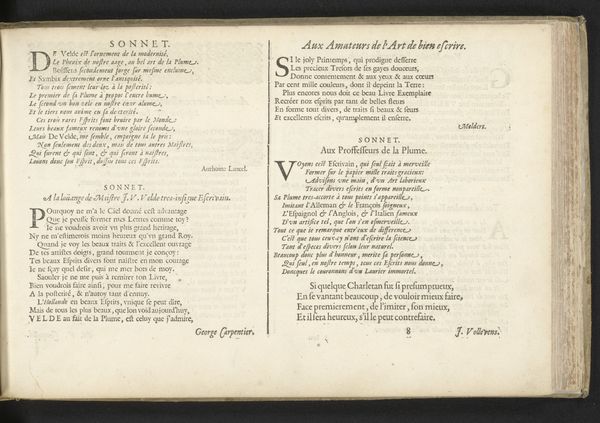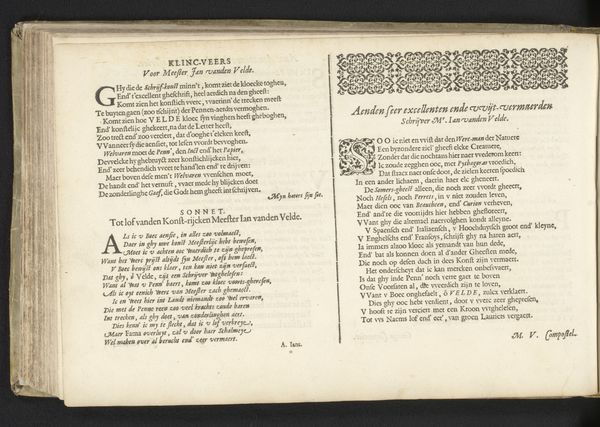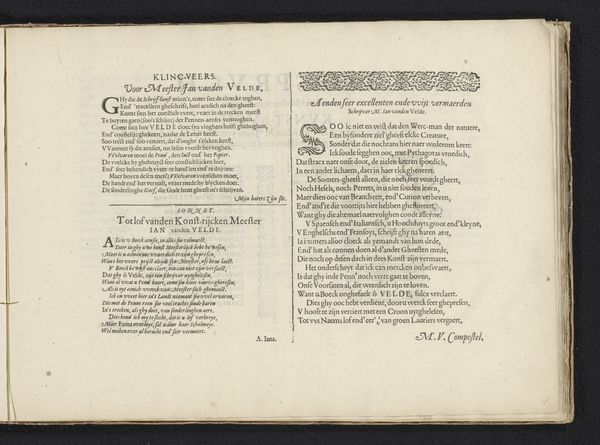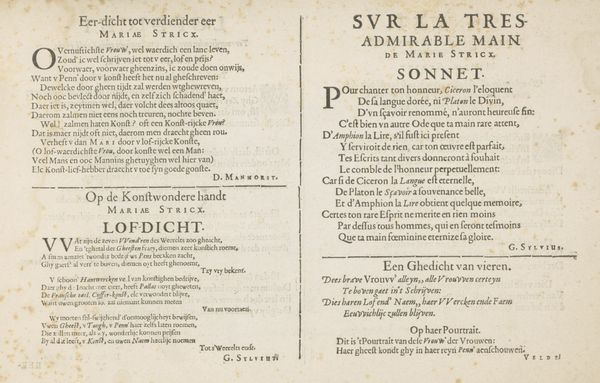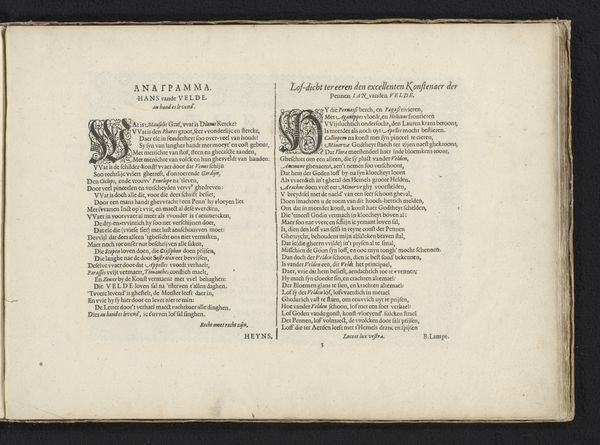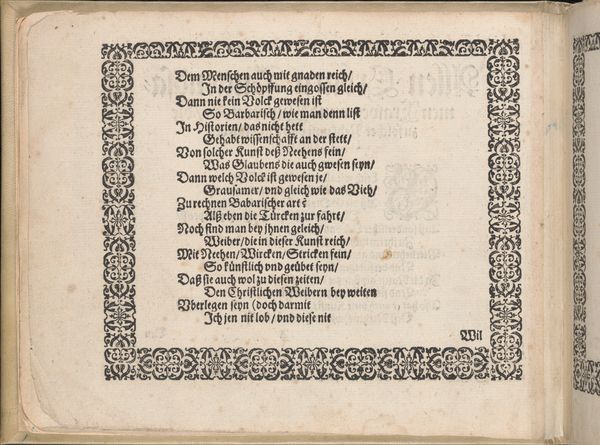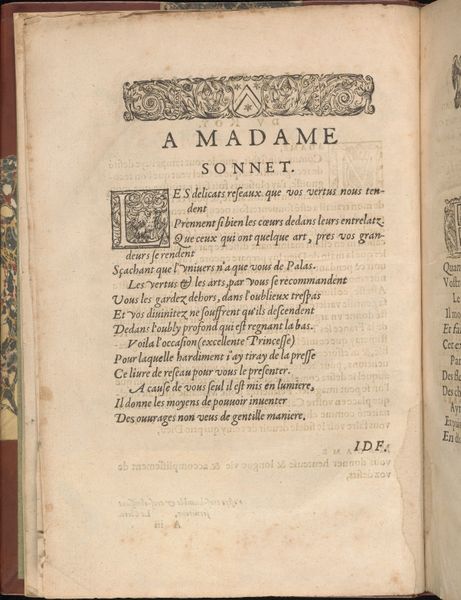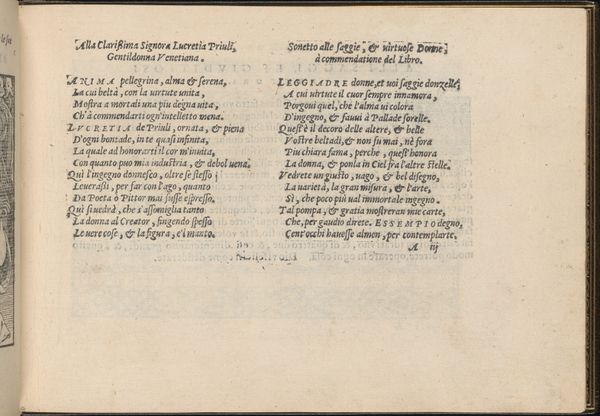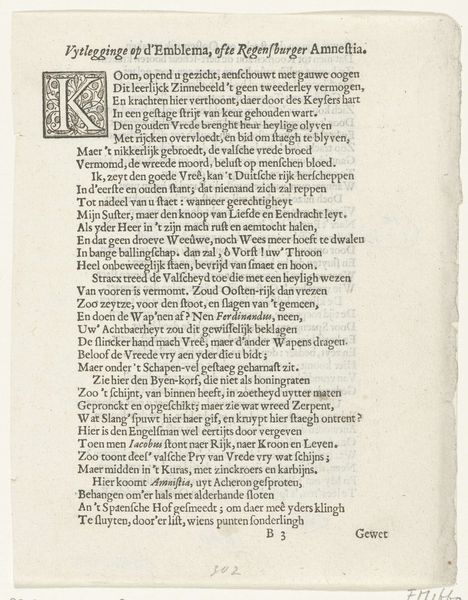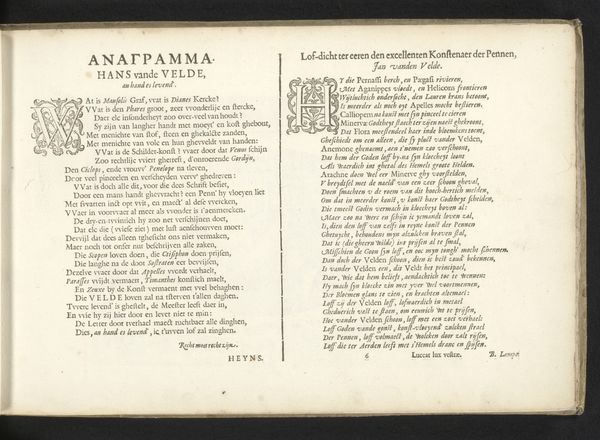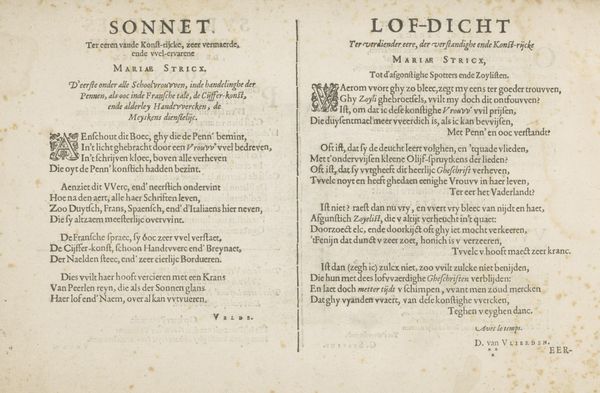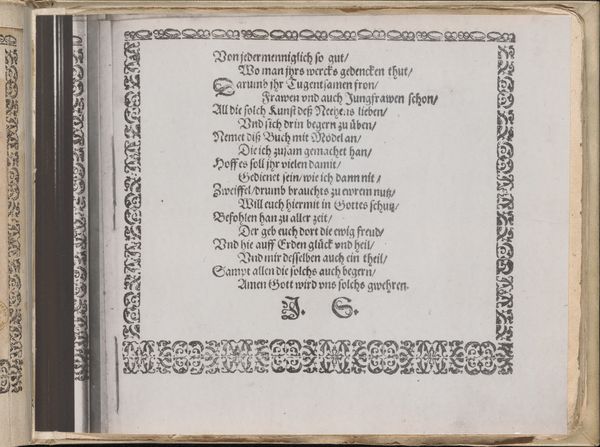
print, textile, engraving
# print
#
textile
#
11_renaissance
#
engraving
#
calligraphy
Dimensions: height 210 mm, width 315 mm
Copyright: Rijks Museum: Open Domain
Curator: So, what catches your eye about this piece? Editor: This is "Twee drempeldichten" from 1605, by Abraham Migoen, a print made from textile and engraving, a beautiful example of Renaissance calligraphy. I’m really struck by how much text there is. It feels so… dense. Curator: Absolutely, and it's the density itself that's speaking to us. Think about the period, the early 17th century, a time of profound social and intellectual upheaval. These "threshold poems" aren't just decoration; they're actively gatekeeping entry into a particular worldview. What stories do you imagine these intricate borders and the juxtaposition of languages—French and Dutch—telling? Editor: I hadn't considered the linguistic aspect. Why both languages? Curator: Well, Dutch was, of course, the language of the region, but the choice of French is deliberate. It’s associating the verses with the sophistication, with the perceived authority of French culture, and the language of diplomacy. Doesn't it strike you as a form of cultural capital being explicitly displayed, perhaps even a commentary on class and privilege embedded within the artwork? Migoen clearly isn't only demonstrating aesthetic skill. How does this pairing of imagery and elevated language underscore certain social divisions? Editor: It's almost performative, isn’t it? Like saying, ‘This knowledge, this beauty, is only for those who can access it'. So Migoen isn't just creating something beautiful. He is also embedding it in existing cultural power structures. Curator: Precisely! It compels us to examine art as something enmeshed within social power dynamics rather than separate from them. The piece becomes less about surface-level aesthetics and more about exploring its underlying historical context. Editor: I’m now seeing how the density, the languages, even the elaborate style, all contribute to this sense of exclusivity. It’s less inviting than I initially perceived. Thank you, I will certainly look at pieces like this in a new light moving forward!
Comments
No comments
Be the first to comment and join the conversation on the ultimate creative platform.
